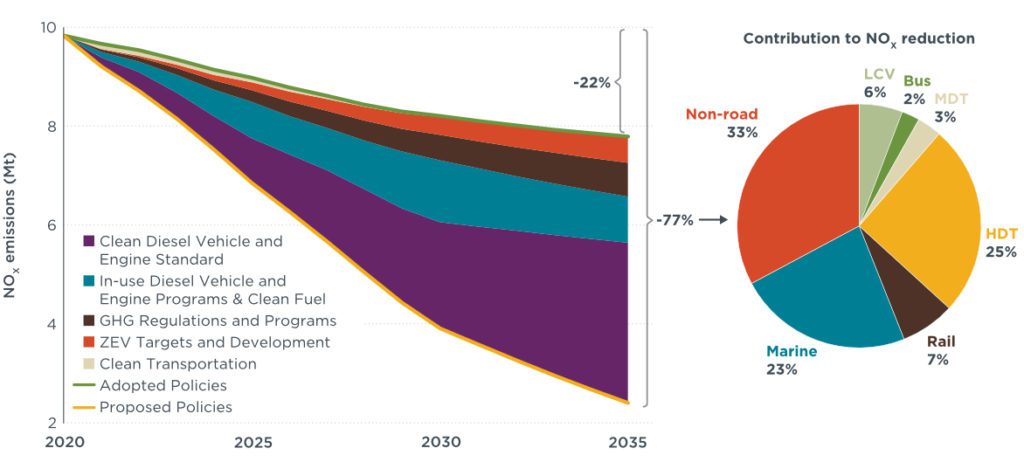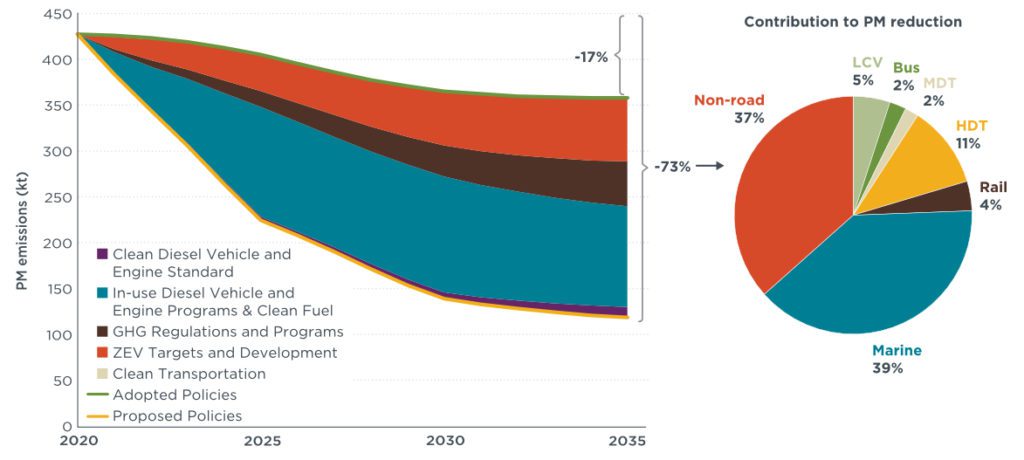Working Paper
China’s Clean Diesel Program: Benchmarking with international best practices and policy recommendations
This is the third in a series of three ICCT research reports that seek to find ways to further reduce diesel pollution in China. The authors assess potential diesel emissions reductions from four transportation sectors—on-road vehicles, non-road machinery, rail engines, and marine vessels—and from strategies that China could consider adopting by 2035. The study models both an Adopted Policies scenario that represents policy measures and associated clean technologies adopted as of October 2022 and a Proposed Policies scenario that is a set of world-class policy measures and clean technology requirements taken from international best practices, especially California.
Results show that the Proposed Policies scenario brings significantly higher emissions reduction benefits than the Adopted Policies scenario. As shown in the figures below, emissions of nitrogen oxides (NOx) and particulate matter (PM) from the diesel transportation sector are estimated to be reduced by 77% and 73%, respectively, in 2035 compared with the 2020 baseline in the Proposed Policies scenario. Meanwhile, the Adopted Policies scenario is estimated to only achieve 21% and 17% reductions, respectively.

Figure 1. NOx emissions reduction under the Adopted Policies and Proposed Policies scenarios by policy category, 2020–2035, and reduction contribution by sector in 2035 under the Proposed Policies scenario.

Figure 2. PM emissions reduction under the Adopted Policies and Proposed Policies scenarios by policy category, 2020–2035, and reduction contributions by sector in 2035 under the Proposed Policies scenario.
Additionally, while this study mostly focused on criteria air pollutants, many of the policies considered are also projected to deliver significant reductions in climate pollutants. Key policies include strengthened greenhouse gas (GHG) emission standards for on-road vehicles, progressive vehicle and engine electrification targets, and modal shift from truck to rail. Under the Proposed Policies scenario, TTW CO2eq emissions are estimated to be reduced by 36% in 2035 compared to the 2020 baseline, and under the Adopted Policies scenario, the TTW CO2eq emissions are expected to be 12% higher in 2035. Examining the modeling results by vehicle segment illustrates that electrification of non-road machinery and heavy-duty trucks is important for decarbonizing diesel vehicles in China.
